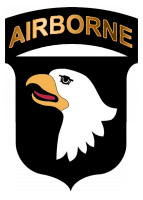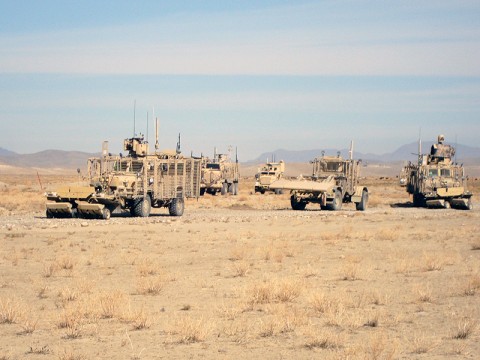The little things that add up
Written by Sgt. 1st Class Peter Mayes
101st Sustainment Brigade, 101st Airborne Division (AA) Public Affairs


Forward Operating Base Sharana, Afghanistan – The mission for route clearance team is quite simple: find a barrage of small-arms, mortars and improvised explosive devices on the roads of Afghanistan and get them off.
For the soldiers of the 887th Engineer Support Company, 326th Engineer Battalion, 101st Sustainment Brigade, everything over there is always easier said than done. The company is primarily a Horizontal Construction Company comprised of heavy equipment operators who were remissioned as route clearance experts eight months prior to their deployment.

The company is split up across up to five Forward Operating Bases located in Regional Command East, mostly providing direct support to the 172nd Infantry Brigade. Galick said the company have successfully found IEDs along the Afghanistan roadways using their Ground Penetrating Radar system.
“This is a testament to the great equipment we use to conduct our mission. We think this gives us an advantaged in operating the GRP and manipulating the interrogation arms. These technical aspects of route clearance translate very well to construction,” he said. “Also our scanning technology is not quite as effective in the snow and ice, so our leaders must depend heavily on visual signs and the mine rollers to locate the IEDs. We have only found one IED the hard way so far, luckily nobody was hurt although the vehicle was mostly destroyed.”
Galick said another advantage equipment operators have in conversion to route clearance is our ability to conduct maintenance.
“As construction equipment operators our equipment is our livelihood, and we recognize the importance of PMCS and maintenance. We also acquire a basic mechanical skill sets through necessity as construction guys. If our equipment dose not function properly then we cannot complete our mission. Even though the stakes our much higher conducting route clearance this directly translate to taking care of our route clearance equipment. If properly cared for and maintained this equipment will save our lives and 887th soldiers live by this and do a outstanding job,” he said.
Galick said the soldiers travel out to several kilometers and deliberately search for explosives. He likens the experience to infantry soldiers conducting foot patrols.“This is a very difficult mission considering the altitude and the rough terrain we negotiate during these patrols,” Galick said.
Understanding they were not strong this particular area, the soldiers primarily focused on the dismount patrol skills during pre-deployment training. The training they undertook was deliberate difficult, Galick said.
“The dismounted STX lanes we designed and conducted right at Fort Campbell consisted of over seven miles of grueling patrols which included reacting to several combat situations, including mine detector operations, IED, direct, indirect, and sniper fire. They carried the same equipment they are carrying here in combat and unpredictably so the weather was very cold and wet making it a very close representation of our combat environment. The conditions help prepare them for what they are experiencing now and negotiating the lane twice in two days help them realize how far they could push themselves,” he said.
“In retrospect our dismounted STX lane was right on target and the value and quality of the training is definitely showing dividends,” Galick said. “Our soldiers are displaying right amount of aggressiveness and discipline, we have had zero safety accidents even through the austere Afghanistan winter. The roads have been covered with snow and ice since approximately the end of December. This snow makes it very difficult to negotiate the mountains roads and frequent wadis or river crossings.”


